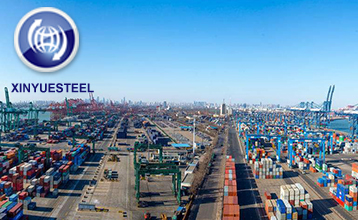Coal prices are still likely to rise during the peak summer
Jun. 29, 2020
Driven by the increased demand for downstream purchases, the prices of coal purchased by large coal companies have risen sharply, and the prices of coal exported from the origin have also risen. Affected by the accident at the Hancheng coal mine, the Yulin Energy Bureau paid close attention to the safety training of coal mines. Both state-owned coal mines and private coal mines must undergo safety inspections. Some private mines have to stop production for at least 2 months for equipment maintenance or down work. Shanxi requires the coal washing plant to get the batch of coal mines before it can be used for washing, sorting and other sorting and processing operations, which causes the coal source of the coal washing plant to be tight and to a certain extent support the coal price. In the Inner Mongolia region, due to the continuation of the special rectification action of "20 years of back-checking", Erdos coal pipe ticket control is still very strict, the supply of coal production is tight, the sales of some coal mines in production are acceptable, and coal prices have risen slightly. The purchasing sentiment of downstream traders and platforms is low, and the shipment volume and inventory of the platform mainly maintain the shipments of long-term users.

At the same time, the economy is accelerating and domestic demand continues to improve. Guangdong, Guangxi, Yunnan, Guizhou, Hainan and other southern provinces and regions are accelerating their normal economic and social order. The tertiary industry's accelerated resumption of production and production also contributed to the increase in load and power. China Southern Power Grid's unified load regulation reached a record high, and the three major industrial electricity consumption indicators in the five southern provinces and regions are booming. Since June, industrial electricity consumption in the five southern provinces and regions has increased by more than 4% year-on-year, of which Guangdong's industrial electricity consumption has increased by nearly 3% year-on-year. On June 20, this year, China Southern Power Grid's cumulative power generation and reception reached 488.4 billion kWh, which turned from negative to positive for the first time year-on-year. In terms of coastal power plants, rainfall in the south has increased, hydropower has begun to exert force, and the daily consumption has recently dropped to 630,000 tons, which has been superimposed on factors such as insufficient imported coal quotas, which have supported the coal price of the port. However, the amount of coal transferred into the sea in coastal areas maintained a growth trend, prompting the slow increase in power plant inventories. With the increase in supply and the lack of stamina for demand, the overall supply is still loose, spot prices are weak and stable, and coal prices have not changed much.
During the "peaking summer" period, due to factors such as better market demand, tight resources, and heavy transportation, coal prices are still expected to rise. First of all, downstream demand enters the peak summer season, and the overall power generation will increase to a higher level. In the case of increased downstream consumption, users need to increase the demand for replenishment, and the coastal coal market is still active. Secondly, hydropower has entered the formal development stage, but whether the increase in clean energy can meet the increase in total electricity consumption is worthy of attention. If it cannot keep up, the thermal power will continue to increase and coal consumption will increase. Thirdly, near the end of the month, some coal mines in Inner Mongolia will face the dilemma of being forced to stop production and reduce production after the coal tube ticket is used up. It is worth paying attention to whether they can apply for additional coal tube tickets at the end of the month. If the adjustment of Mongolian coal continues to be at a low level, the low-sulfur high-quality resources in the Bohai Rim will be insufficient, and the market coal price will continue to rise. Fourth, during the "summer peak", the demand for coal will increase, will there be any changes in import policies, and whether there will be an increase in imported coal, and the impact on the domestic coal market is worthy of attention.



